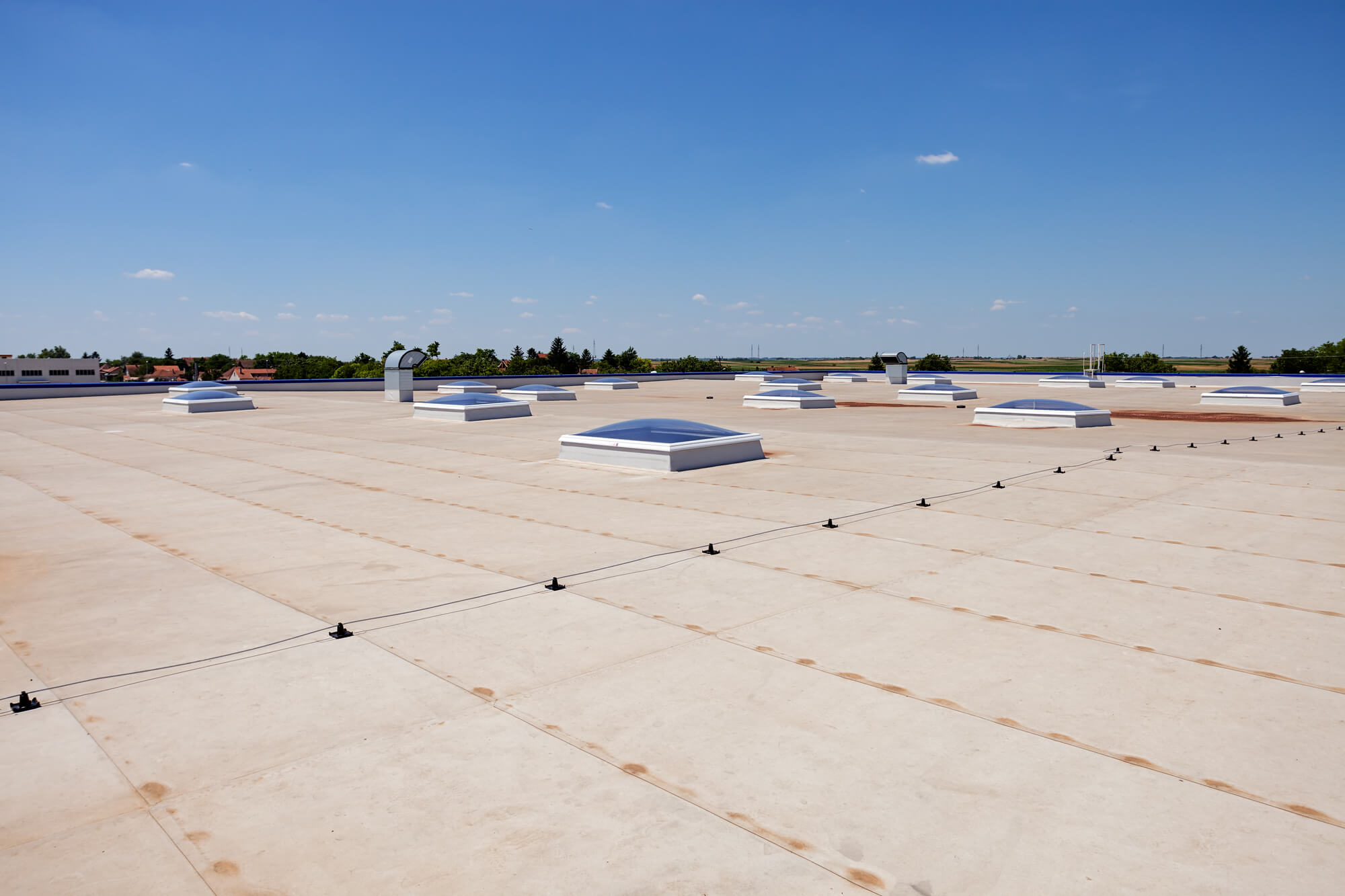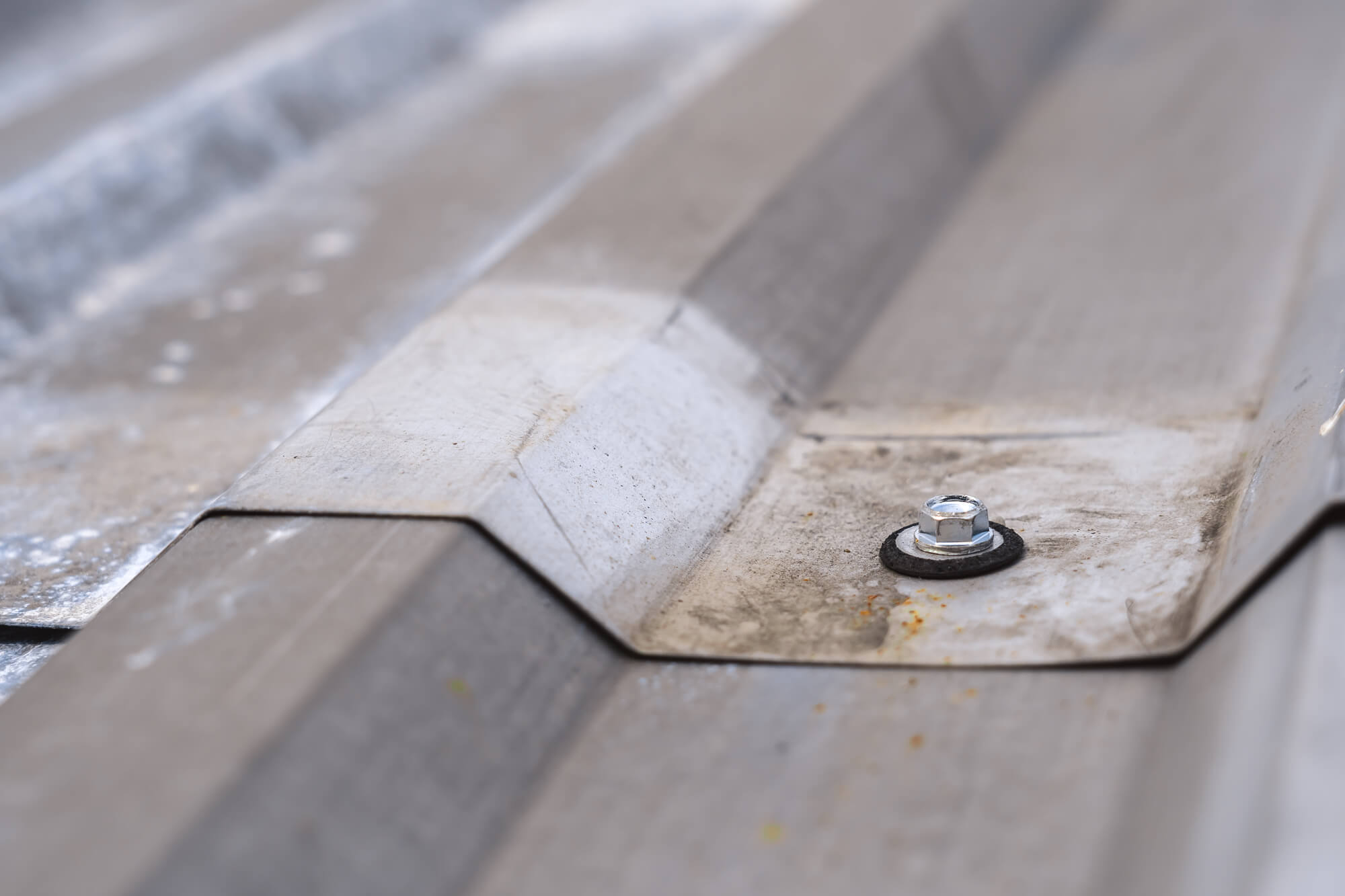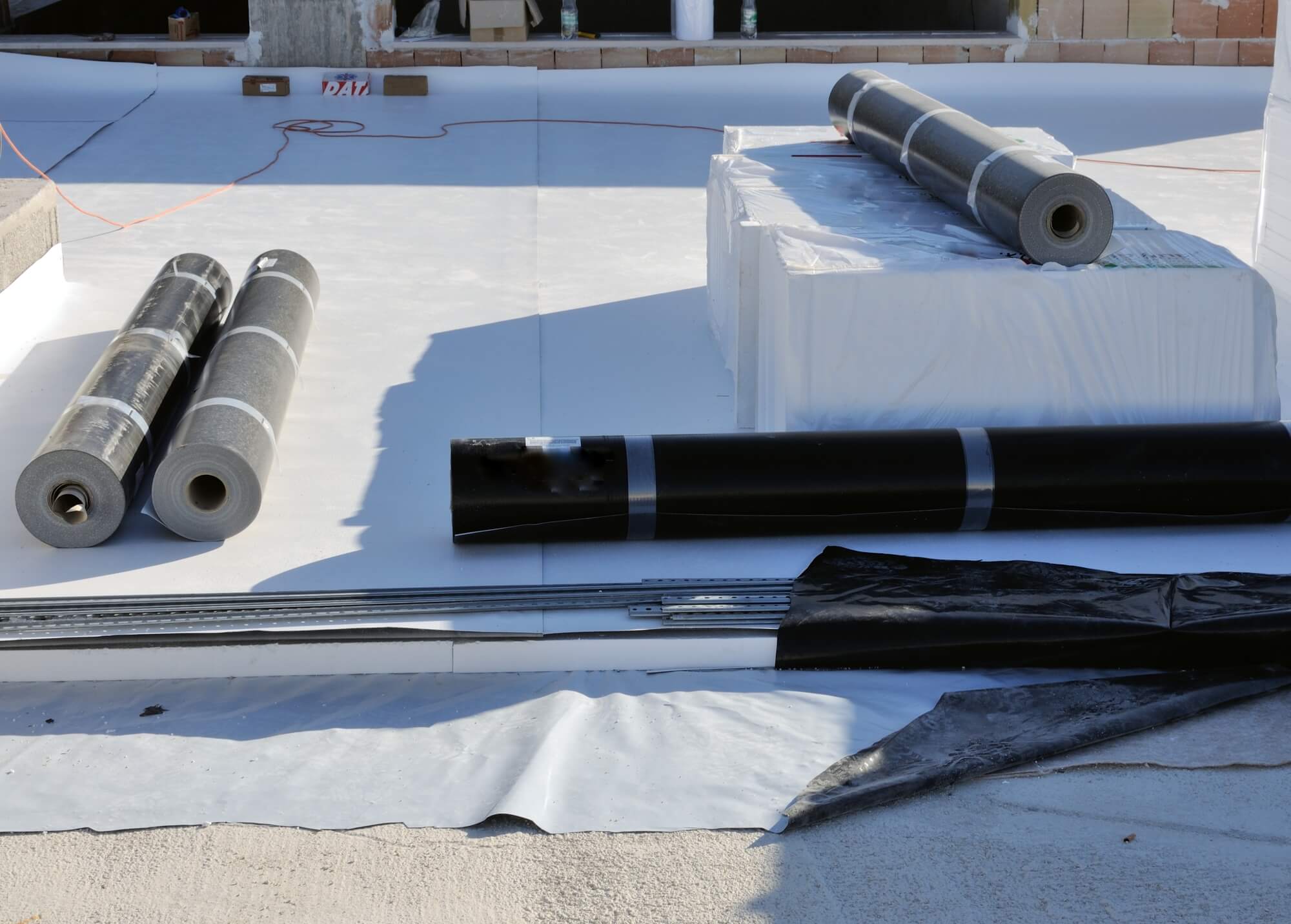December 31, 2025
Snow and Ice Management: Protecting Commercial Roofs and Building Exteriors from Winter Strain
Winter conditions like snow and ice create a very different operating environment for
Commercial roofing serves as your first line of defense against the elements. From torrential rains and harsh sunlight to bone-chilling winters and scorching summers, your roof is on duty 24/7, 365 days a year.
To ensure your commercial roof continues to perform this vital role, professional inspections are an absolute must. These regular assessments help commercial building owners identify potential issues, prevent damage, and safeguard the investments your business relies upon.
In this blog, we unveil the significance of commercial roofing inspections, explaining how they go beyond maintenance and emerge as tools for sustaining your property and your business.

Commercial roofs are not a one-size-fits-all solution; they come in various types, each with its unique characteristics and considerations.
Learning about these roof types allows commercial property owners to schedule inspections and maintenance efforts effectively. Let's delve into the primary commercial roof types and shed light on their distinct features:
Flat roofs, also known as low-slope roofs, are characterized by their nearly level surface. They are often found in commercial buildings and offer additional space for rooftop equipment and installations.
Due to their minimal slope, flat roofs require specialized attention during inspections. Ensuring proper drainage and addressing ponding water issues are critical aspects of inspection and maintenance.
Pitched roofs have a steeper slope compared to flat roofs, allowing for efficient water runoff. They are often constructed with various materials, including asphalt shingles, tiles, or metal panels.
Inspecting pitched roofs involves assessing the condition of roofing materials, flashing, and ensuring the slope promotes water drainage. Damage to individual shingles or tiles may require repair or replacement.
Metal roofs are renowned for their durability and longevity. They are composed of metal panels or sheets and are chosen for their resistance to harsh weather conditions and low maintenance requirements.
Inspections for metal roofs focus on checking for rust, loose fasteners, and damaged panels. Proper sealing and maintenance of seams are essential to prevent leaks.
EPDM roofs are made of a synthetic rubber material known for its flexibility and weather resistance. They are commonly used for flat and low-slope commercial roofs.
Inspecting EPDM roofs involves looking for signs of deterioration, such as cracks, punctures, or membrane damage. Commercial property owners must also schedule inspections to ensure proper sealing around penetrations.
Built-up roofs consist of multiple layers of asphalt-saturated felts and hot-applied bitumen. They are known for their durability and waterproofing properties.
Inspections for BUR roofs include checking for blistering, cracks, or areas of degraded asphalt, and checking the integrity of the roof's layers.
Modified bitumen roofs are similar to BUR roofs but use modified asphalt for enhanced performance. They are popular for their flexibility and resistance to temperature fluctuations.
Inspections focus on identifying areas of granule loss, membrane damage, and ensuring proper adhesion. Moreover, seams and flashings require close attention.
Commercial roofs, like any other structural component, are not immune to wear and tear. Over time, they may develop a range of issues that demand prompt attention. Analyzing these common roofing problems is essential to recognize potential vulnerabilities.
Roof leaks are perhaps the most prevalent issue in commercial roofing. They occur when water infiltrates the roofing system through damaged or compromised areas, resulting in interior water damage. Signs of concern include:
Neglecting roof leaks can lead to extensive structural damage, compromised insulation, and potential health hazards due to mold growth.
Ponding water refers to when water accumulates and forms puddles on a flat or low-slope roof, typically due to inadequate drainage. Visible pools of water that persist for more than 48 hours after rainfall indicate ponding issues.
Ponding water can cause roof membrane degradation, insulation damage, and eventually compromise the roof's structural integrity.
The roofing membrane, which serves as the waterproofing layer, can sustain damage from various sources, including weather, foot traffic, or punctures.
Signs of concern include blisters, cracks, punctures, or tears in the roofing membrane. Membrane damage can result in water infiltration, insulation saturation, and even structural damage if left unaddressed.
Flashings are components designed to seal vulnerable areas like roof edges, penetrations, and transitions. When improperly installed or damaged, they can lead to leaks.
Loose, damaged, or missing flashings are clear indicators of potential problems. Flashing issues can allow water to infiltrate the building envelope, leading to costly interior damage.
Inadequate roof drainage can result from blocked or clogged gutters, downspouts, or roof drains, causing water to accumulate on the roof's surface.
Water not draining properly and ponding issues are signs of poor drainage. Poor drainage can accelerate roof deterioration and lead to structural damage, especially during heavy rainfall.
Severe weather events, such as hailstorms, can inflict damage on roofing materials, causing granule loss, dents, and membrane punctures.
After a hailstorm, contact professional inspectors to check the roof for visible damage, including dents, fractures, or dislodged materials. Hail and storm damage, if left unaddressed, can compromise the roof's weather resistance and accelerate deterioration.
Commercial roofing materials naturally age over time, leading to decreased performance and durability. Visible signs of wear, including cracks, fading, or brittle roofing materials, indicate aging. Aging roofing materials are more susceptible to leaks and damage, necessitating repairs or replacement.

Proactive roof maintenance is a strategic investment that goes beyond mere upkeep; it is a safeguard against potential problems that can impact your business's bottom line. Here are the advantages that come with staying ahead of roofing issues:
Proactive maintenance significantly extends the lifespan of your commercial roof. Regular inspections and repairs address minor issues before they escalate into major problems, allowing your roof to withstand the test of time with resilience.
By maintaining your roof, you can potentially add years to its life, postponing costly replacements.
The financial benefits of proactive roof maintenance cannot be overstated. By addressing roofing issues in their early stages, you avoid the need for expensive emergency repairs or premature roof replacements, which can be a considerable financial burden.
Proactive maintenance allows you to manage your maintenance budget more effectively by spreading costs over time and avoiding surprises.
A well-maintained roof contributes to energy efficiency within your commercial building. Proper insulation and a watertight roofing system can reduce heat loss during the winter and minimize heat gain in the summer.
As a result, your HVAC systems work more efficiently, leading to substantial savings on your energy bills over the years. This energy conservation also aligns with sustainability goals and can enhance your business's eco-friendly image.
Your commercial building houses valuable assets, from equipment and inventory to critical infrastructure. Proactive roof maintenance protects these assets by preventing water damage and structural issues that could disrupt your business operations.
Unforeseen roof problems can cause severe disruptions to your business operations. Proactive maintenance allows for planned repairs and inspections, minimizing business interruptions.
With scheduled maintenance, you can coordinate roofing work to occur during times that have minimal impact on your everyday operations and make sure your business runs smoothly and efficiently.
A well-maintained roof is a safer roof. Thanks to regular inspections, a commercial roof's structural integrity remains intact, reducing the risk of accidents or injuries caused by roof-related issues. The safety of occupants and anyone visiting a commercial facility is paramount, making proactive roof maintenance an essential part of risk management.
Some insurance policies may require regular roof maintenance to maintain coverage. Proactive maintenance can help commercial building owners stay compliant with insurance requirements and, in some cases, lead to lower insurance premiums.
Compliance with regulations and insurance standards not only protects a business but also provides financial benefits.
Knowing a commercial roof is in optimal condition provides peace of mind. It eliminates the uncertainty of when a roofing issue might strike and offers the assurance that your business investments are well-protected.
The confidence that comes with proactive maintenance allows you to focus on your core business activities without the worry of unexpected roofing problems.
Embracing proactive roof maintenance aligns with sustainability goals. By extending the lifespan of your roof, you reduce the environmental impact associated with roof replacements and the disposal of roofing materials.
Sustainable practices are becoming important for businesses due to environmental responsibility and attracting environmentally conscious occupants and partners.
A well-maintained roof enhances the overall value of your commercial property. When the time comes to sell or lease, a structurally sound and maintained roof can be a valuable selling point. Moreover, it reflects on your property's overall condition and can command higher property values and rental rates.

To schedule a professional commercial roof inspection or to learn more about our comprehensive services, including restoration, construction, and reconstruction, contact BlueTeam today. Protect your investment with our experts in commercial roofing services.